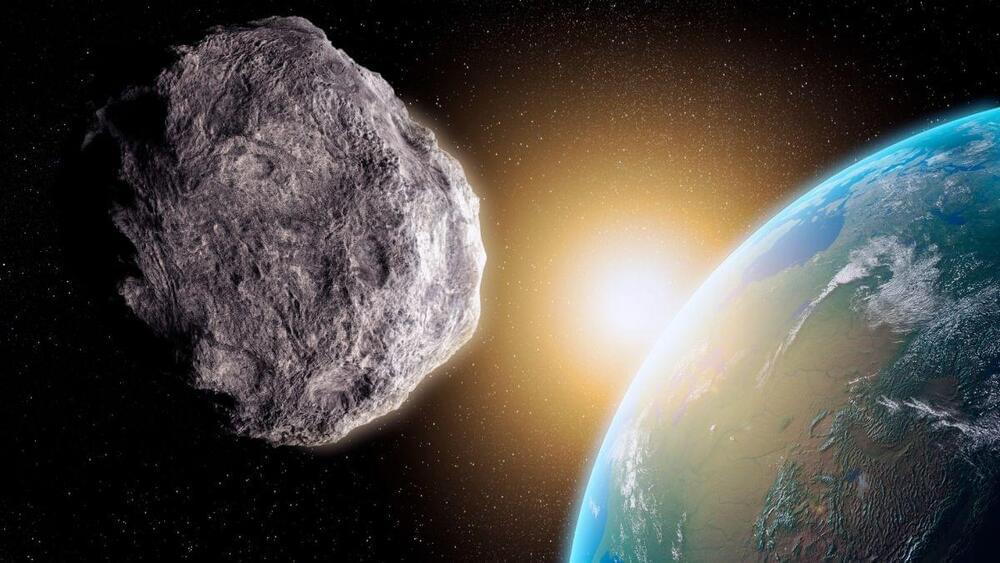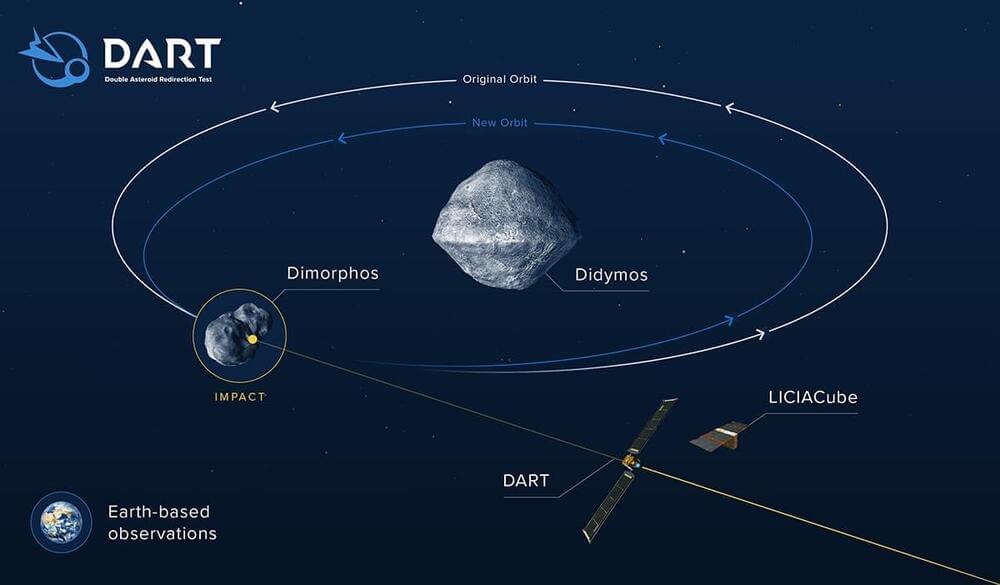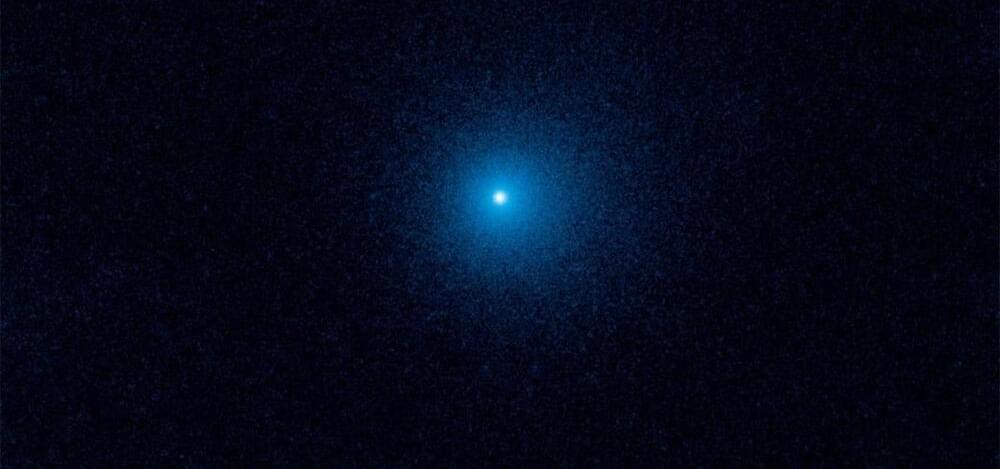😳!
Astronomers detected a small asteroid called 2022 NF that will pass within 23% of the distance from Earth to the moon tonight.


A look at how emerging concepts in science & technology could disrupt our most our understandings of identity, consciousness, and free will. This is the 5th episode of the Existential Crisis series which looks at concepts like Transhumanism, Life Extension, the Simulation Hypothesis, the Doomsday Argument, and the Anthropic Principle.
Visit our Wesbite:
www.IsaacArthur.net.
Support the Channel on Patreon:
https://www.patreon.com/IsaacArthur.
Listen or Download the audio of this episode from Soundcloud:
https://soundcloud.com/isaac-arthur-148927746/ec05-consciousness-and-identity.
Cover Art by Jakub Grygier:
https://www.artstation.com/artist/jakub_grygier
😳!
Researchers have discovered never-before-seen types of crystal hidden in tiny grains of perfectly preserved meteorite dust. The dust was left behind by a massive space rock that exploded over Chelyabinsk, Russia, nine years ago.
On Feb. 15, 2013, an asteroid measuring 59 feet (18 meters) across and weighing 12,125 tons (11,000 metric tons) entered Earth’s atmosphere at around 41,600 mph (66,950 km/h). Fortunately, the meteor exploded around 14.5 miles (23.3 kilometers) above the city of Chelyabinsk in southern Russia, showering the surrounding area in tiny meteorites and avoiding a colossal single collision with the surface. Experts at the time described the event as a major wake-up call to the dangers asteroids pose to the planet.
Anything not forbidden is mandatory quote by TH white once and future king.
An exploration of the notion that extinction by unforeseen means is a solution to the Fermi Paradox and that all civilizations in the universe blunder into extinction without seeing it coming.
Fermi Paradox Debate Video:
My Patreon Page:

A giant asteroid’s impact is considered the likely cause of the mass extinction of the dinosaurs almost 66 million years ago.
While there is no potential harm from an asteroid on the Earth at present, it is still important to keep our defense system ready in order to prevent catastrophic consequences such as impacts by deflecting trajectories of asteroids if one is ever discovered.
With this aim, NASA launched the Double Asteroid Redirection Test (DART) mission, the world’s first planetary defense test mission, last November. DART is the first-ever mission dedicated to investigating and demonstrating one method of asteroid deflection by changing an asteroid’s motion in space through kinetic impact. In summary, it is to collide with an asteroid and deflect it from its orbit in order to provide valuable information for the development of such a planetary defense system.
Start listening with a 30-day Audible trial and your first audiobook plus two Audible Originals are free. Visit.
http://www.audible.com/isaac or text “isaac” to 500–500.
As ancient and vast as the Universe is, it seems like some alien race arose in the galaxy long before us, but who rose before them? What would the cosmos be like for the first civilization to arise, and what if it is us?
Visit our Website: http://www.isaacarthur.net.
Support us on Patreon: https://www.patreon.com/IsaacArthur.
SFIA Merchandise available: https://www.signil.com/sfia/
Social Media:
Facebook Group: https://www.facebook.com/groups/1583992725237264/
Reddit: https://www.reddit.com/r/IsaacArthur/
Twitter: https://twitter.com/Isaac_A_Arthur on Twitter and RT our future content.
SFIA Discord Server: https://discord.gg/53GAShE
Listen or Download the audio of this episode from Soundcloud: Episode’s Audio-only version: https://soundcloud.com/isaac-arthur-148927746/fermi-paradox-firstborn.
Episode’s Narration-only version: https://soundcloud.com/isaac-arthur-148927746/fermi-paradox-…ation-only.
Credits:
The Fermi Paradox: Firstborn.
Episode 242; June 11, 2020
Writers:
Traveling far distances in space is difficult, but advances in jet propulsion and genetics are making it possible. Trace is joined by Dr. Kiki Sanford to discuss how by altering the genes in our own bodies, we can make ourselves more fit to survive on other planets!
Follow Kiki on Twitter: https://twitter.com/drkiki.
Check out her website: http://www.about.me/drkiki/
The Habitable Exoplanets Catalog.
http://phl.upr.edu/projects/habitable-exoplanets-catalog.
First Synthetic Yeast Chromosome Revealed.
http://www.nature.com/news/first-synthetic-yeast-chromosome-revealed-1.14941
“It took geneticist Craig Venter 15 years and US $40 million to synthesize the genome of a bacterial parasite. Today, an academic team made up mostly of undergraduate students reports the next leap in synthetic life: the redesign and production of a fully functional chromosome from the baker’s yeast Saccharomyces cerevisiae.”
Reworking the Human Genome So People Can Colonize Other Planets.
http://phys.org/news/2014-03-reworking-human-genome-people-colonize.html.
“If you haven’t thought about reworking the human genome so people can colonize other planets, don’t worry. Plenty of people are on it.”
Genes and Galaxies.

One of the largest comets known is approaching our planet on the only trip through the inner solar system it will make during our lifetimes.
Five years ago, the Hubble Space Telescope spotted a large comet at the farthest distance ever, as it was approaching the sun from way out between the orbits of Saturn and Uranus. Now, that giant space snowball is coming in for its closest pass by Earth in just a few weeks.
Comet C/2017 K2 will be at its nearest point to us on its current swing through the inner solar system on July 14. Even at its closest, however, it will still be farther away from us than the average distance between Earth and Mars. This will likely make it difficult to see the comet without at least a small telescope, despite its substantial stature.

Climate change is already had a serious impact on global food production — from making food less nutritious to messing with the growing season of plants, to even pushing some crop species towards extinction. On top of that, the world’s oceans are already stressed by overfishing, with over 70 percent of the world’s fish stocks fully exploited, over-exploited, or depleted.
The combination of overuse and climate change could prove deadly for global food security. And by the time 2,300 rolls around, it will be too late to mitigate the impact of human activity on our food sources, both those on land and those under the sea.